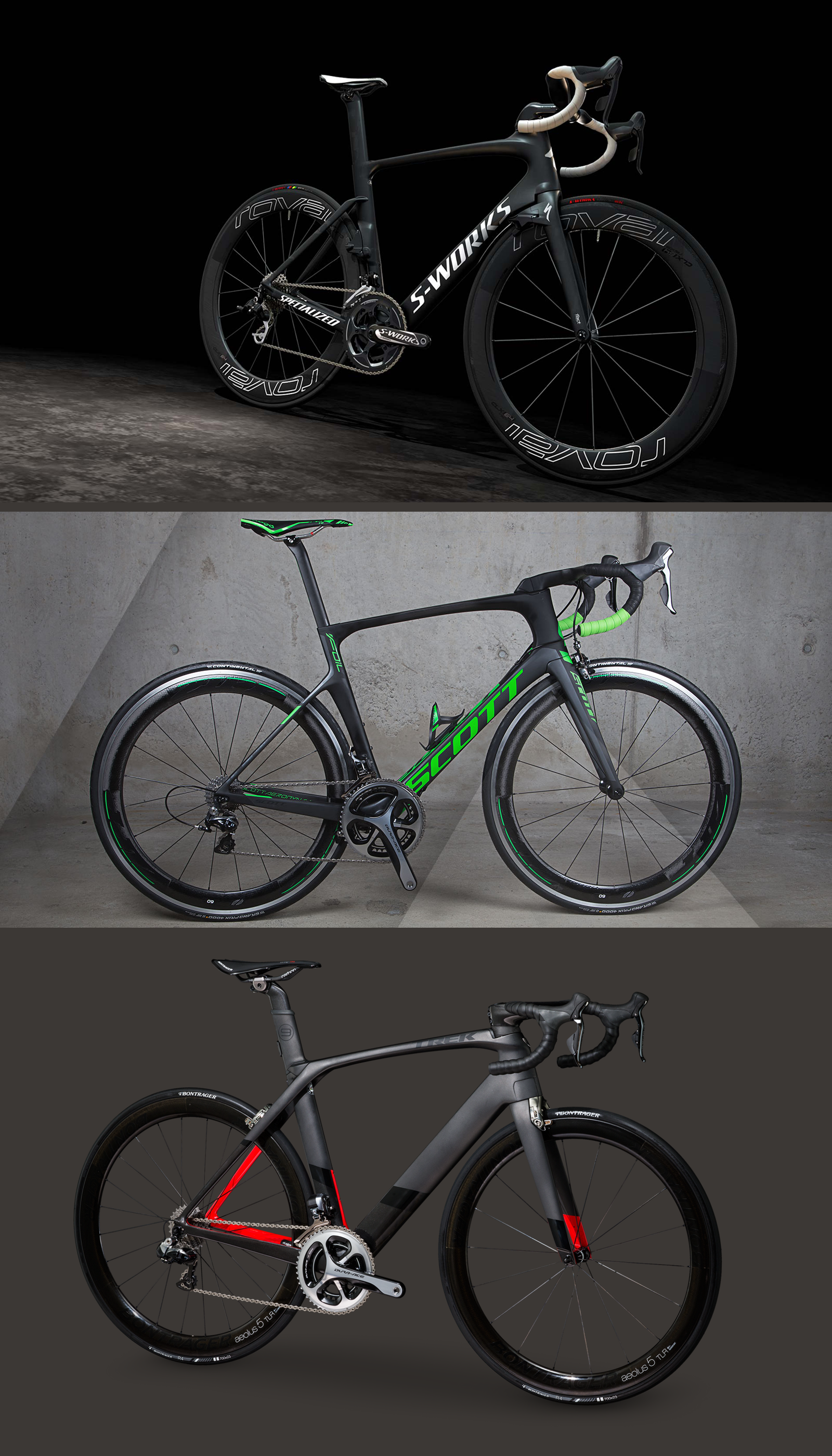It’s like one of those cooking shows…you have a week before the Tour starts to wow the judges with an aero road bike. The ingredients are: carbon, some aluminum, and you have use of a wind tunnel.

Who Wore the Aero Road Bike Best?
After updating our Who Wore the Aero Road Bike Best graphic with the new Madone, shared it with Mark V, who wrote back with these observations.
Venge
Somehow the stem/bar looks like a Soviet submarine detail. What really pushes this design into a league of its own are those crazy brakes, unlike any mechanism I’ve ever seen on a production bike. Lots of proprietary parts makes initial fit critical, because the design makes tinkering with rider position largely impractical to any degree. One small virtue is that the handlebar is adjustable for tilt, but hand height is achieved with a combination of bar rise (0 or 25mm) and spacers on the steerer.
Foil
This one will probably not make shop mechanics roll their eyes, being largely devoid of kooky aero tricks. Scott again exploits Kamm-tail sections to produce a versatile bike with an excellent balance of weight, ride quality, and stiffness. The BB-brake position has its share of detractors, but it can still function well. Not running the cables through the stem or head tube makes the Foil the most conventional of the three. The top of the line model has a one-piece bar/stem, while mid-level bikes have an aero stem that accepts conventional bars.
Madone
The biggest details are the internally routed bar/stem and the IsoSPeed “decoupler” which basically allows the front and rear wheels to respond independently to the road surface. Trek uses a proprietary direct-mount brake that appears to use an internal roller cam mechanism similar to the old Cunningham-design Suntour mtb/bmx brakes. Overall the design reminds me of Robocop.
And what I said was
Prediction! History will consider cowled rim brakes on aero roads bikes, as the transition year before discs were legal.
— byron@bikehugger (@bikehugger) June 18, 2015
I’ve ridden and reviewed two of the three previous versions of these aero road bikes and the Cervelo S5. What it comes down to, at this level of bike, is they’re all fast and good. It’s the geo and ride quality that makes the difference. Having spent time getting jack hammered by a seat mast, I can tell you comfort will win for the rest of us, and not the pros.
That’s because all the aero advantage is lost when a rider shifts around in the saddle, trying to get comfortable. Haven’t ridden an ISO-coupled bike, but assured by colleagues and friends that it “totally works,” I’d bet on the Scott for the best ride, but then it has those darn BB-mounted brakes. Again, I imagine what these three bikes will look like in their next version, with discs
As I opened this post, if the pre-Tour bike hype was conducted like a cooking show, now add discs into the mix, and see what happens. Then it gets real interesting.
Let us not forget Cervelo, as Mark V followed up in another message
…Cervelo Soloist got the ball rolling on aero road, but S5 and 1st-gen Foil became the bookends that defined aero road market. S5 is a triathlon bike morphed into a road bike (as in fast in a straight line but lacking the handling and sprint stance expected of a pro road bike). Meanwhile the Foil is all about cropped airfoil sections that give light weight and drivetrain stiffness. The first Venge took many features seen on early Cervelos along a different stylistic route; second gen leaps off that springboard into highly developed aerodynamic integration (ie proprietary parts). 2nd-gen Foil keeps the aero tech in moderation as did its predecessor. 2nd-gen S5 completes that Cervelo’s evolution into a proper road bike….unfortunately Cervelo have no media presence at Pro Tour level, and they are literally last (model) year’s news.
We're riding townies, adventure, and mountain bikes. Find recommendations on our store page. As Amazon Associates we earn from qualifying purchases.